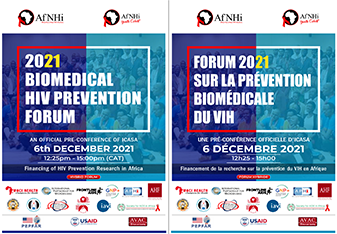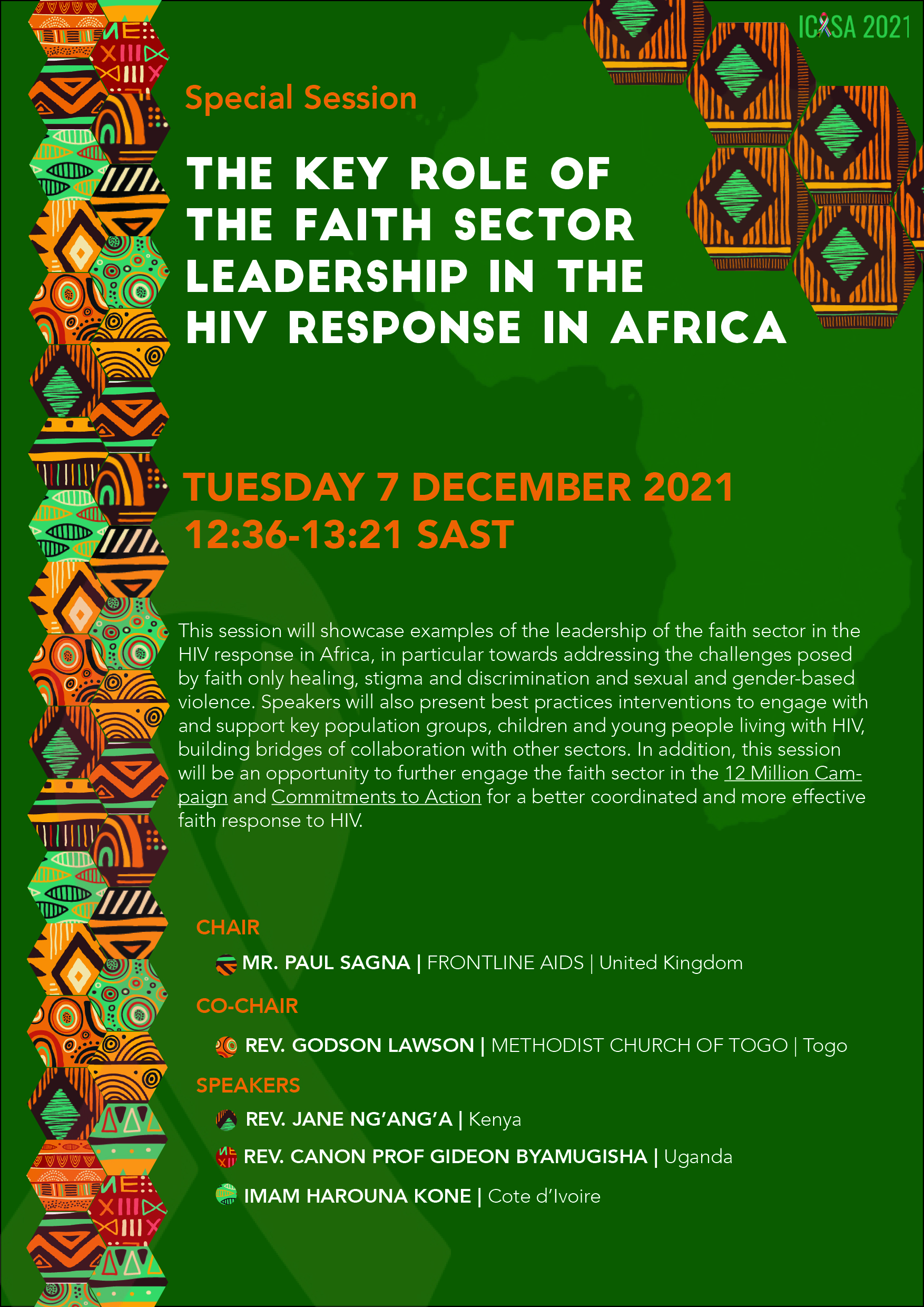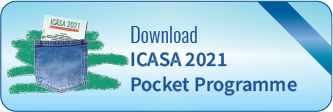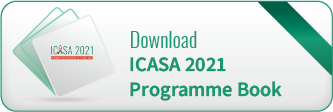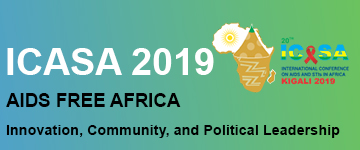Description: This track will encompass all aspects of fundamental HIV biology and the host response to HIV. Areas of focus will include HIV infection and replication, transmission, genetics, evolution, structure and function, pathogenesis, adaptive and innate immune responses to HIV, genetic susceptibility to HIV, interaction of micronutrients, co -infection and progress in animal models. Pre-clinical vaccine, microbicide, and drug development will be important themes of this track.
Abstract Categories
| HIV EVOLUTION, VIRAL DIVERSITY AND BIOINFORMATICS |
| A1. HIV-1/2: Origins, evolution, diversity and response to ARV |
| A2. Molecular epidemiology of HIV diversity |
| A3. Bioinformatics analysis of HIV diversity and drug resistance |
| IMMUNOLOGY OF HIV |
| A4. Innate immune responses and function in natural history of HIV infection |
| A5. Humoral immune responses and function in natural history of HIV infection |
| A6. Cellular immune responses and function in natural history of HIV infection |
| A7. Immune responses in resistant cohorts: elite controllers and exposed uninfected |
| TRANSMISSION AND PATHOGENESIS (HIV-1/2) |
| A8. Viral determinants of HIV pathogenesis |
| A9. Acute and early HIV infection |
| A10. Animal models of transmission, disease resistance and progression |
| A11. HIV transmission (mucosal and mother to child transmission; other transmission) |
| A12. Ageing and HIV |
| Host genetics and HIV infections |
| A13. Host genetics of resistance and susceptibility and restriction factors |
| HIV: Co-infections and emerging pathogens |
| A14. HIV super-infection |
| A15. HIV co-infection with TB and other pathogens (Hepatitis B, C, HPV, bacterial agents..) |
| A16. HIV interactions with emerging and other opportunistic pathogens |
| A17. HIV and host Microbiota |
| HIV: Drug development and resistance |
| A18. HIV drug development: Synthetic, traditional and microbicides |
| A19. Molecular mechanisms of drug action and antiviral drug resistance and drug interaction |
| A20. Nucleic acid based HIV and SIV therapies |
| A21. Targeting and HIV persistence during ART (cure strategies) |
| Vaccine development |
| A22. Clinical trials in HIV vaccine development |
| A23. Animal models for vaccine development |
| Interaction of micronutrients and HIV infection |
| A24. Effect of micronutrients in HIV and AIDS pathogenesis, transmission and treatment |
| A25. Mechanisms of micronutrient and HIV interactions |
| Diagnostics tools development (for use in resource limited settings) |
| A26. Novel assays of immune responses in HIV and AIDS |
| A27. Novel assays and cost effectiveness tools for virological monitoring |
| A28. Rapid and cost-effective HIV screening and diagnostic methods |
| A29. HIV drug resistance testing |
| Characterization of HIV latency and viral reservoirs |
| A30. Measurement of HIV/SIV reservoirs |
| A31. Host cellular latency |
| A32. Targeting and eradication of reservoirs |
| COVID 19 |
| A33. Basic science, pathogenesis, virology, immunology, inflammation |
| A34. Covid-19 Vaccine |
| A35. COVID-19 Molecular testing and algorithm |
| A36. COVID-19 testing RTD and Ag testing |
| A37. COVID-19 genetic diversity |
Description: This track will encompass all aspects of fundamental HIV biology and the host response to HIV. Areas of focus will include HIV infection and replication, transmission, genetics, evolution, structure and function, pathogenesis, adaptive and innate immune responses to HIV, genetic susceptibility to HIV, interaction of micronutrients, co -infection and progress in animal models. Pre-clinical vaccine, microbicide, and drug development will be important themes of this track.
Abstract Categories
| Clinical course of HIV infection and disease |
| B1. Natural history of HIV Disease including markers of HIV Disease progression |
| B2. Pre-ART Patient Care: Opportunities and Challenges |
| B3. Morbidity and mortality/life expectancy during ART |
| B4. Acute and early HIV infection, meeting the new targets (95-95-95) |
| Diagnosis and management of co-infections/co-morbidities |
| B5. Co-infections (TB, Hepatitis, STIs, Cryptococcus, bacterial diseases, leishmaniosis, Malaria and others) |
| B6. Prophylaxis against common opportunistic infections (CPT, IPT, antifungal) |
| B7. immunization in HIV infected people |
| B8. Diagnosis and management of Hepatitis B/C |
| B9. Tools for diagnosis and management of infections: point of care |
| B10. Diagnosis and management of STIs |
| B11. Syphilis, HPV and others |
| HIV and NCDS |
| B12. Diabetes, cardiovascular, renal diseases, bone mineral diseases, HIV and neurocognitive disorders) |
| B13. HIV and malignancies |
| B14. HIV, Ageing and Fragility |
| Antiretroviral therapy |
| B15. First line therapy (when to start, what to start with, durability) Differentiated HIV Care |
| B16. ART monitoring strategies |
| B17. Treatment failure: drug resistance, second line therapy and salvage therapy |
| B18. Adherence and retention |
| B19. Antiretroviral therapy in children |
| B20. Antiretroviral therapy in adolescents |
| B21. Antiretroviral therapy and PMTCT in pregnant women |
| B22 Antiretroviral therapy in elder populations |
| B23. Adverse effects of antiretroviral therapy including immune reconstitution syndrome be sure Track C integrate this (quality of life…) |
| B24. HIV-2, HIV-1+2 infections |
| B25 Management of HIV infection in Key Populations |
| B26. Cost effectiveness of ART |
| B27. Antiretroviral therapy to prevent HIV-Transmission |
| B28 ART maintenance simplification |
| Palliative care and nutrition |
| B29. Pain management and end of life care |
| B30. Clinical nutritional care in HIV infection |
| B31. Home and community based care and support |
| B32. Other Strategies and Therapies (traditional medicine, spiritual care) |
| Clinical guidelines, tools and algorithms |
| B33. Country adaptation of global HIV diagnosis and treatment guidelines |
| B34. Diagnosis and monitoring tools |
| COVID 19 |
| B35. Clinical science, testing (RT –PCR and serologic) |
| B36. COVID 19 Impact on HIV related services |
| B37. Innovation in Service delivery approaches |
Description: This track will focus on HIV and AIDS prevention research and issues related to the design, implementation and evaluation of prevention programs to reach the SDG. It will include examination of Research, methodological and programmatic advances in the continuum of prevention, particularly best practices in HIV prevention for vulnerable populations in resource-limited settings. Strategies to put HIV prevention research into practice, efforts to promote preparedness for bio-medical prevention technologies, and research on new prevention approaches including microbicides, vaccines, pre- and post-exposure prophylaxis, circumcision and other methods will be presented. This Track will also address co-morbidities (Hepatitis, Tuberculosis, and STI’s, communicable end emerging diseases) and emerging.
Abstract Categories
| Basic HIV Epidemiology |
| C1. Natural history of HIV |
| C2. HIV prevalence and incidence trends, morbidity and mortality trends |
| C3. Epidemiology in general population, risk factors for acquisition of HIV, including sero discordant couples |
| C4. Risk factors for acquisition of HIV, geographic heterogeneity and contextual |
| C5. Epidemiology of HIV in the aged (50+) |
| C6. Epidemiology of HIV in youth, adolescents and children |
| Epidemiology of HIV co‐morbidity and emerging diseases |
| C7. HIV and other sexually transmitted infections (STI) |
| C8. HIV and Tuberculosis co‐infection |
| C9. HIV and Malaria co‐infection |
| C10. HIV and Viral hepatitis co-infection |
| C11. HIV and non‐communicable diseases (cardiovascular risk, metabolic diseases, mental health, reproductive health, etc.) |
| C12. HPV infections and cancers in people living with HIV |
| C13. HIV infection in Africa and cancers associated with human papillomavirus (anus; cervix; throat), other associated cancers |
| C14. HIV, Opportunistic Infections (OI) and the epidemiology of emerging diseases |
| C15. Quality of life of people living with HIV |
| Social Epidemiology of HIV |
| C16. Sexual behavior, vulnerability and Most at Risk Populations (MARPS)including adolescent girls and young women |
| C17. Socio‐cultural and economic determinants of HIV |
| C18. Relapse of risky behaviors with the advent of ART |
| C19. Gender based violence and HIV transmission |
| HIV/AIDS Surveillance and Monitoring and Evaluation |
| C20. Modeling HIV epidemic in the advent of ART, where does M and E fit? |
| C21. HIV and AIDS Surveillance:Routine,Sentinel,Second generation and HIV phylogenetics |
| C22. Surveillance of opportunistic infections |
| C23. Surrogate markers: What remains of the measurement of CD4 T lymphocytes in a situation of accessibility of the viral load? |
| Surveillance of HIV Drug resistance |
| C24. Population‐based HIV sero epidemiologic studies, and measuring new HIV infections, including in children |
| C25. HIV reservoir: "deep" residual infectivity in HIV reservoirs in people correctly treated according to the algorithms proposed by the WHO |
| Methodological Issues and Capacity‐Building in Epidemiological and Prevention Research |
| C26. Novel Research, Ethical and human rights issues in epidemiological and prevention research |
| C27. Measuring and modelling the impact of prevention and treatment interventions on the HIV epidemic at the population level. |
| C28. Methods aimed at measuring the impact of the HIV epidemic, recent HIV infections and HIV incidence |
| C29. Surveillance systems and methods including geographical information system |
| C30. Estimation of the size of KP |
| HIV/AIDS Prevention Programmes |
| C31. Triple Elimination of Prevention of Mother to Child Transmission of HIV, Hepatitis B and syphilis |
| C32. Prevention programmes in institutional and community settings |
| C33. Prevention programmes for immigrants, mobile and displaced populations |
| C34. Integrated prevention for and with PLHIV, and key populations |
| C35. Integrated HIV prevention for adolescents and young people |
| C36. Therapeutic and psychosocial care for adolescents and young adults born to infected mothers; |
| C37. HIV Prevention technologies |
| C38. New approaches for HIV prevention |
| C39. Integrating HIV prevention into reproductive health, care, support and treatment programmes |
| C40. HIV Testing and diagnosis strategies |
| Diversified prevention tools |
| C41. PeP |
| C42. PrEP |
| C43. Microbicides |
| C44. Ehealth |
| C45. VMMC |
| COVID 19 |
| C46. Epidemiology, transmission dynamics, prevention, vaccines |
| C47. HIV Infection and COVID-19 |
| C48. Impact of COVID-19 on HIV response |
Description: This track aims to highlight new knowledge and address gaps in the translation of behavioral and social science evidence into practice, and to contribute to the building of theory and understanding in HIV-related social science. The track also aims to promote understanding of the individual and social determinants of HIV-related risk, vulnerability and impact, to inform development of effective and sustainable HIV responses that are based on human dignity and individual entitlements. This track will feature research, analysis and evaluation on psychosocial factors that shape individual attitudes, experiences, and behaviors; social and structural factors that shape vulnerability and risk; social and cultural norms that underlie individual risk and community vulnerability; programmes that promote acceptation of human diversity and fast track access to HIV and STI prevention, treatment, care and support; social and structural factors that shape vulnerability; and methods and outcomes of individual and community engagement, leadership, empowerment, and self-determination. In addition, this track will examine evidence underpinning HIV related stigma, discrimination and exclusion, lessons emerging from the practice of restoring dignity and coping capacities of those affected.
Abstract Categories
Human rights, law and ethics
| D1. Laws, protection and empowerment of PLHIV and vulnerable populations |
| D2. Human right, Protections and HIV services for Key and vulnerable populations |
| D3. Human rights, ethics and use of antiretroviral drugs for treatment and prevention |
| D4. Children’s rights, protections and HIV |
| D5. Human Rights, Sexual rights and access to citizenship |
| D6. Human rights, Ethics HIV testing, policy and practice |
| D7. Human rights, culture religion, social, behavior, culture and harm reduction |
| D8. Ethics, law and research |
| D9. Clinical services, public health policy and programmes |
| D10. Ethics, human right, access to medicines for prevention, treatment and care |
| Stigma, Discrimination and the Legal Environment |
| D11. Experience and impacts of HIV and TB related stigma |
| D12. Intersecting stigmas, marginalized identities, Homophobia and transphobia |
| D13. Racism, ethnicity-based social exclusion and HIV control |
| D14. Stigma, discrimination, key and vulnerable populations affected by HIV |
| D15. Stigma, social attitudes, media and public debate |
| D16. Punitive laws, enforcement and HIV risk |
| SEX, SEXUALITY, GENDER AND MEDIA REPORTING IN HIV |
| D17. Gender equality, power dynamics and gender equity: Addressing a feminized epidemic |
| D18. Sexualities and sexual cultures |
| D19. Adolescents, young people, and HIV |
| D20. same – sex- attracted, bisexual and queer people |
| D21. Feminity, masculinity and transgender issues in HIV |
| D22. Relationships, partnership, concurrency and sexual networks |
| D23. New prevention technologies and Family-centered approach to HIV care and support |
| D24. HIV Co-morbidities |
| Policies, Programs and HIV response |
| D25. Policy, politics and HIV management |
| D26. Law enforcement and vulnerable populations |
| D27. Harassment and Discrimination |
| D28. Harm reduction policies and politics |
| D29. Access to HIV management |
| D30. Health and HIV Policy development, implementation and evaluation |
| D31. Policies for HIV prevention, diagnosis, treatment, care, protection and support |
| D32. Policies and socio-economic determinants of vulnerability |
| D33. HIV policies, the workplace, and educational institutions |
| D34. HIV policies and intellectual property, treatment access and TRIPS |
| D35. Policy M&E, analysis, impact and indicators of policy effectiveness |
| D36. Evidence–informed advocacy for policy formulation and review |
| Social theories and knowledge production |
| D37. HIV prevention theories and approaches |
| D38. Social, cultural and behavioral science collaboration |
| D39. Methods in social and behaviour surveys |
| Communication, mass media and popular education |
| D40. Communication strategies on HIV and AIDS |
| D41. The media and HIV and AIDS |
| D42. Digital media, social networking and HIV prevention, treatment, care and support |
| D43. HIV, media, culture and religion |
| D44. Media and policy making |
| D45. Inter- organizational communication and knowledge transfer |
| D46. Intergenerational communication and HIV |
| Socio-cultural determinants of HIV |
| D47. Family structures, kinship and social security networks among key and vulnerable populations |
| D48. Harmful traditional practices and HIV |
| D49. Youth, globalization and HIV |
| D50. Sex work, the global recession and HIV |
| D51. Traditional and complementary approaches in the response to HIV |
| STRUCTURAL DETERMINANTS OF HIV |
| D52. Poverty, social and socio-economic structures and HIV |
| D53. Fertility, family planning, Reproductive rights, health and HIV |
| D54. Family-centered approach to HIV care and support |
| D55. Conceptualizing social and structural factors and their impacts |
| D56. Poverty, wealth. Income inequalities and HIV |
| D57. Dynamics of social status and power |
| D58. Gender, age, ethnicity, disability and HIV |
| D59. Economic transitions, socio-cultural changes and HIV risk |
| D60. Social dynamics, intergenerational differences and HIV |
| D61. Migrants, migration and population dislocation |
| D62. Fertility, family planning, reproductive health services and HIV |
| D63. Violence, conflict and HIV |
| D64. Humanitarian disasters and HIV |
| D65. Gender based violence and HIV |
| D66. Prisons, closed settings and HIV |
| COVID 19 |
| D67. Public Health responses including physical distancing and community level effort, programme policies, lifting restrictions, modelling. |
| D68. Intersections between Covid19 and HIV |
| D69. Impact of Covid-19 on HIV Mental Health |
| D70. Innovative approaches by communities to respond to human rights violations in the context of HIV |
| D71. Innovative approaches by communities to respond to HIV in a context of COVID 19 |
Description: This track will aim to provide new insights into the status of the health systems and its capacity and challenges to expanding treatment and prevention in resource-limited settings. At the same time, issues related to health economics, integration of health programs, country ownership of national health and HIV programs, and advancement of a comprehensive and integrated approach to health and rights will be discussed. This Track must show the need for a holistic vision of the fight against the disease by the effective strengthening of health systems. The verticalization of the fight is not a proper and appropriate response in a context where we have recurrent epidemics.
Abstract Categories
| HIV and health system strengthening |
| E1. AIDS investments for health system strengthening |
| E2. Innovative responses to resource needs for health system strengthening |
| E3. Procurement and supply chain management |
| E4. Community systems strengthening for health care delivery |
| E5. Public health systems and the delivery of HIV care at scale |
| Management for health care delivery |
| E6. Gender responsive HIV programming |
| E7. Integrated HIV service delivery services with non-health response programs |
| E8. Decentralization, differentiated care and task-shifting |
| SHARED RESPONSIBILITY, GLOBAL SOLIDARITY AND THE SDGS |
| E9. Governance – peer review and accountability mechanisms |
| E10. Sustainable financing options and financial tracking |
| E11. Accelerated access to medicines, vaccines, and diagnostics |
| E12. Capacity strengthening for HIV domestic program funding. |
| Health economics |
| E13. Building country-level capacity for quality improvement |
| E14. Evaluation of integrated models of health service delivery |
| E15. Health access financing models for HIV service delivery |
| Partnership in HIV |
| E16. Private-public partnership and HIV care delivery |
| E17. Innovative partnership models |
| Innovation and best practices |
| E18.Interventions for increase uptake of and retention in HIV services |
| E19. Public-private partnerships |
| E20. Technologies for HIV care delivery |
| COVID 19 |
| E21. Social, Economic, Political, Human right impact of the pandemic and the response. |
| E22. Integrated HIV and COVID 19 care |

Satguru Travels is your official travel partner with a 360 degree solution to travel.
